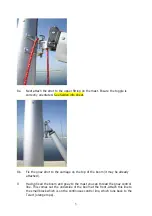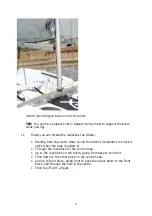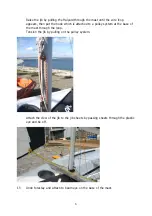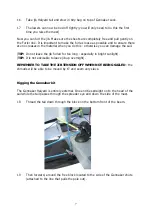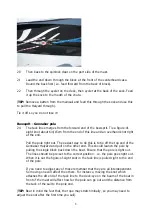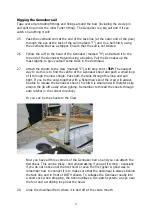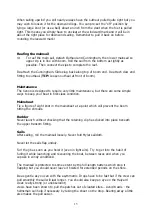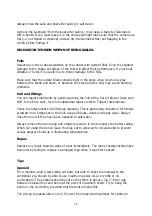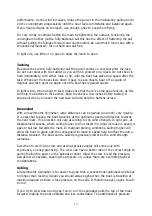
17
performance. As the wind increases, reduce the power in the mainsail by pulling down
on the cunningham progressively until the boat feels comfortable and balanced again.
If you have tell tales on the leech, use enough gnav to keep them flying.
For very windy conditions flatten the main by tightening the outhaul, tensioning the
cunningham further (with a fully-battened sail this has the effect of flattening the sail
without pulling the fullness forward and can therefore be used much more than with a
conventional mainsail). Sit out hard and sail free.
In light airs, use little or no gnav to allow the leech to open.
Tacking
Be aware that with a fully-battened sail the power comes on very fast after the tack.
Do not over steer with the rudder as you will find yourself on a reach. Do not sheet in
hard immediately, with either main or jib, until the boat has picked up speed after the
tack. Whenever the boat slows down it pays to ease sheets, bear off a couple of
degrees and then point up again once the boat has regained speed.
In light winds, when about to tack, make sure that there is some gnav tension, as this
will help the battens to flick across. Ease the sheet a few inches before tacking. A
sharp pull when you reach the new tack will also help the battens across.
Downwind
With an asymmetric Spinnaker, large distances can be gained (and lost!) very quickly.
It is essential to keep the boat traveling at the optimum speed and direction towards
the next mark. This direction will vary according to the wind strength. In light airs, at
displacement speeds, where sailing higher will not result in a great increase in speed, it
pays to sail low towards the mark. In marginal planing conditions, sailing higher will
allow the boat to plane and the consequent increase in speed help to offset the extra
distance traveled. The boat can be sailed progressively lower as the wind strength
increases.
Just when to sail high or low and at what precise angles will come only with
experience, so keep practicing. The crew can have a better idea of the correct angle to
sail by feeling the power in the spinnaker sheet. Allow the crew to call the pressure.
Sail as low as possible, keeping the pressure on, unless there are overriding tactical
considerations.
Gybing
An asymmetric Spinnaker is far easier to gybe than a conventional spinnaker and takes
no longer than tacking. Ideally you should always gybe when the boat is traveling at
maximum speed as there is less pressure on the sails. It therefore pays to gybe 'reach-
to-run'.
If you try to slow down and gybe 'run-to-run' the spinnaker pulls the top of the mast
forward, making the boat unstable and less controllable. The additional air pressure

